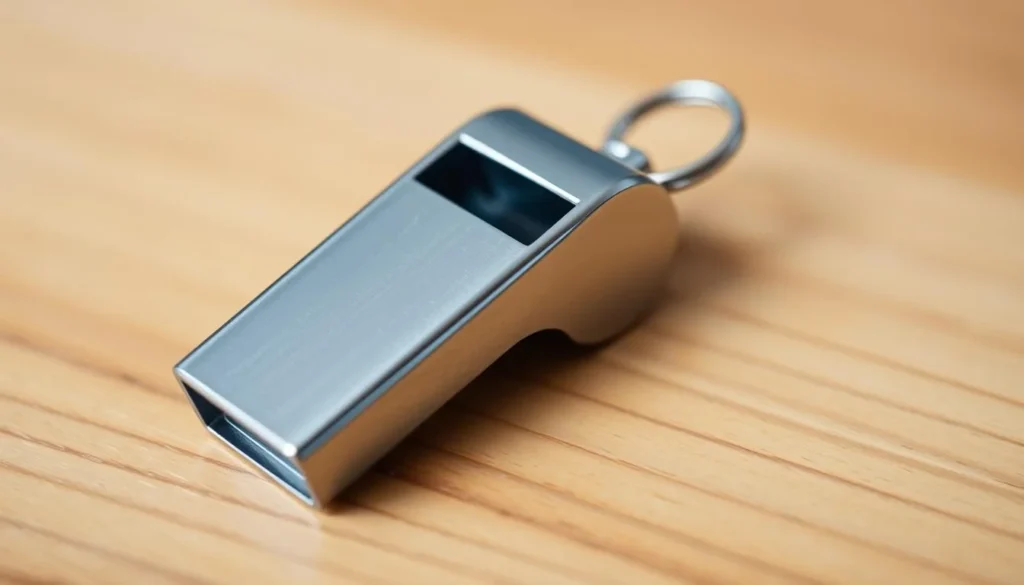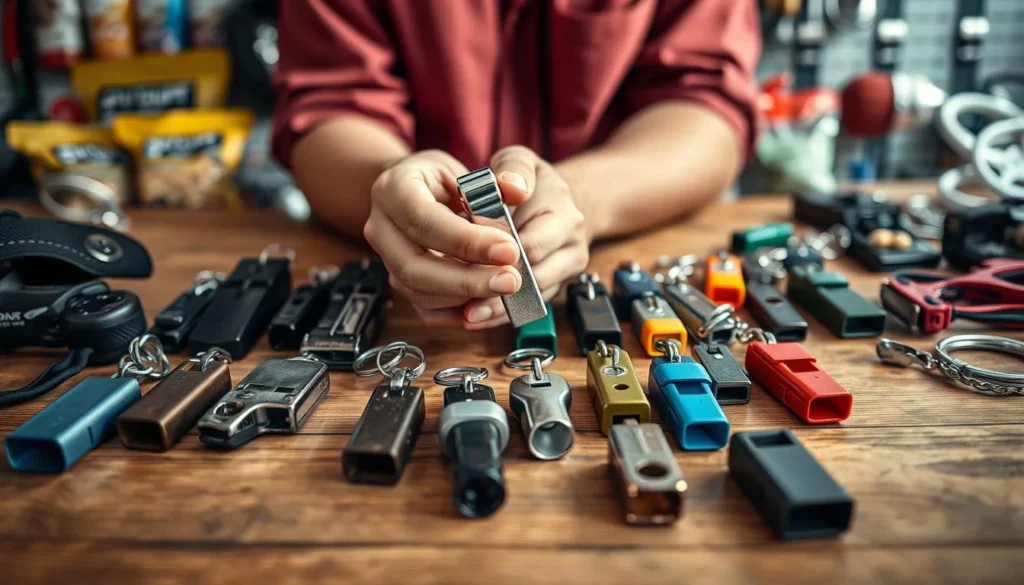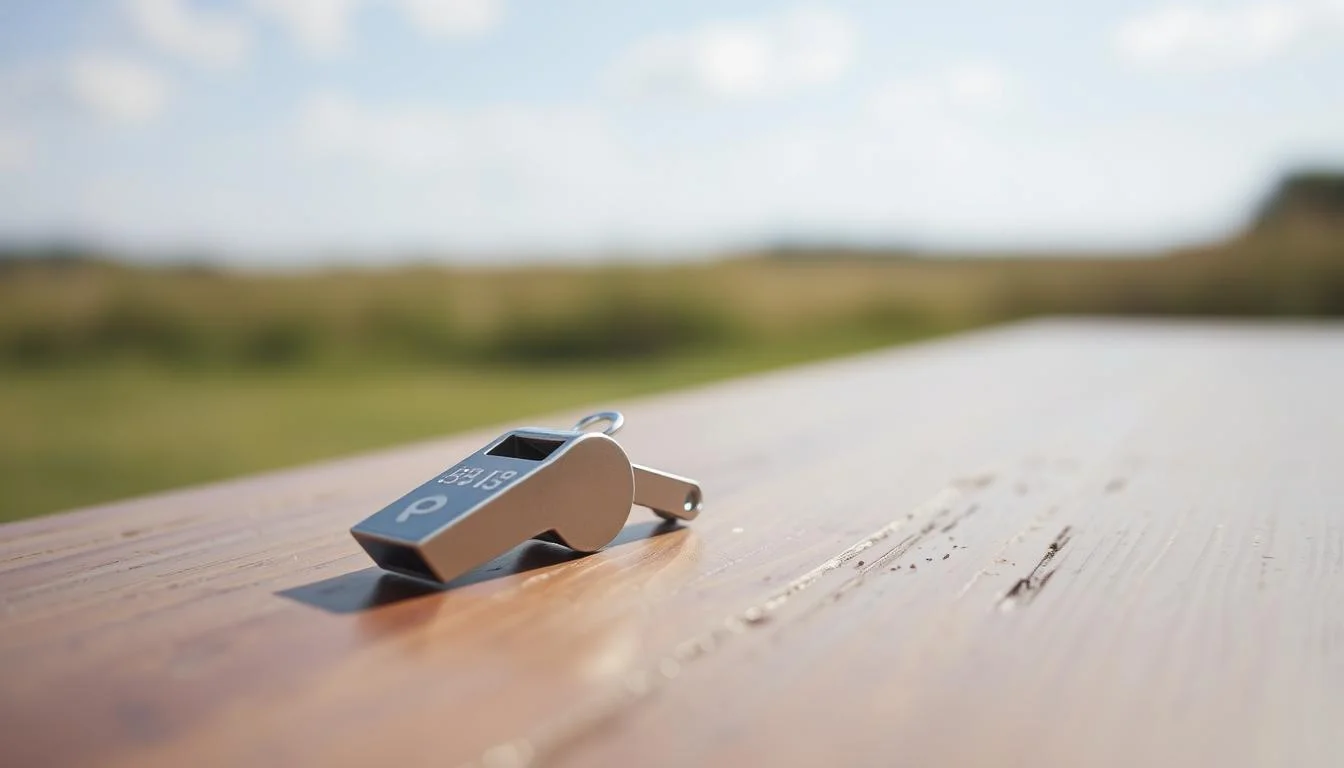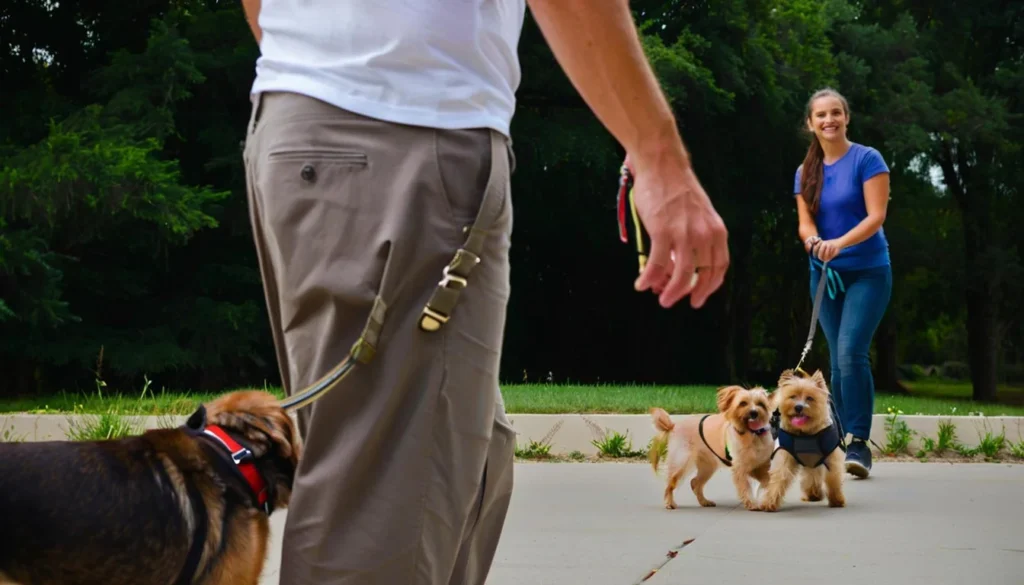I remember my first time in an Ohio field, holding a whistle and watching my Labrador run. I wanted a way to call him without yelling. This made me wonder: are dog whistles good for training?
A dog whistle is just one tool, like clickers, treats, and voice. It's not magic. Its effectiveness depends on proper training and consistent use.
This article is for U.S. dog owners looking for answers. Is a dog whistle good for training recall, long-distance control, or for sport and working-dog work? I'll explain how whistles work, the different types, and how to use them safely and effectively.
Key Takeaways
- Are dog whistles good for training? They can be, when paired with clear conditioning and consistency.
- The importance of dog whistle training lies in predictable cues and long-distance clarity.
- Whistles work best as part of a broader training plan, not as a standalone fix.
- I will cover types, safety, and step-by-step methods to make a whistle reliable.
- If you want reliable recall or sport-specific control, a whistle is worth considering.
Understanding how dog whistles work for dogs
I explain the basics so you can make informed choices about a whistle for dog to come and other cues. Knowing about hearing limits, tone types, and sound travel helps you pick the right tool for recall or field work.

Dog hearing range vs. human hearing
Dogs hear much higher frequencies than people. Human hearing usually tops out near 18,000–20,000 Hz. Dogs can detect sounds up to roughly 45,000 Hz.
This means tones around 30,000–35,000 Hz are very noticeable to dogs but faint or inaudible to most humans.
Because of that gap, I can use a sound your dog hears without cluttering the household with extra noise for family or neighbors.
Ultrasonic versus audible whistles
Ultrasonic whistles emit pitches above human hearing. They are not truly silent. Dogs react to the tone even if people do not.
Many trainers favor ultrasonic whistle models when they want minimal disturbance during training sessions.
Audible whistles produce tones humans can hear. I find audible options useful when the handler needs to monitor rhythm and volume. You can match patterns and know the whistle is working in real time.
Why whistles carry over long distances
High-frequency tones cut through background noise and remain steady across open spaces. The piercing quality of some whistle tones makes them easy for a dog to locate at a distance.
This is why hunting, herding, and police units often rely on whistles for long-range commands.
Remember, a whistle is a communication cue, not a behavioral cure. I emphasize conditioning the sound so the dog links the whistle for dog to come with a specific reward or action. Training builds meaning into the tone so it becomes reliable across environments and distractions.
are dog whistles good for training
I test tools and share tips on training dogs with whistles. A whistle is a neutral sound that becomes meaningful through conditioning. It's good for training only when you teach the dog to link the tone to an action or reward.

Whistles as a communication cue, not magic
I see a whistle as a language tool. It doesn't force a dog to stop barking or obey on its own. I pair a clear tone with treats, praise, or a release cue. With repetition, the sound signals a desired behavior.
When a whistle improves training outcomes
In my experience, training dogs with whistles is beneficial for long-distance recall and field work. It's especially useful when voice won't carry. Hunters, herders, and sport handlers often use whistle patterns for consistent commands.
The benefits of dog whistles include a distinct, repeatable cue that's less affected by emotion than the human voice. This reliability is key when multiple handlers must give the same signal or when a dog must respond under distraction.
Limitations and expectations for owners
Owners should expect to invest time in initial conditioning sessions. I recommend short, frequent practices and clear patterns for each command. Without this work, whistles won't produce reliable results.
Be careful about overuse. Constantly blowing a whistle can desensitize a dog. Audible whistles may bother neighbors at parks. At close range, some owners prefer voice or clicker work over a whistle.
Types of dog whistles and choosing the right dog whistle for training
I test whistles with my dogs before buying one. It's important to find gear that fits the dog, the environment, and my goals. This saves time in training. Here, I'll explain the main types, styles, and how to pick between audible and ultrasonic options.

Single-pitch, two-tone, and adjustable-frequency whistles
Single-pitch whistles have a steady tone, great for basic cues. They're good when I need uniform signals from different handlers.
Two-tone whistles offer two distinct pitches. They're useful for giving different cues without changing hand signals during complex tasks.
Adjustable-frequency whistles let me adjust the pitch for a specific dog. They're perfect when I need to match a dog’s sensitivity.
Pea whistles, shepherd’s lip whistles, and clicker-whistle combos
Pea whistles make a warbling sound due to a small ball inside. They're good in cold weather and windy conditions.
Shepherd’s lip whistles require practice to use well. They're best for herding drills where subtle modulation is key.
Clicker-whistle combos offer a training click and a distant whistle. They're great for sessions where I need immediate clarity and range.
Choosing audible vs. ultrasonic for your situation
Audible whistles let me hear what the dog hears. This helps me adjust pattern and timing in busy parks.
Ultrasonic whistles are discreet and won't disturb neighbors. I use them in urban areas or during wildlife-sensitive outings.
Dog size and hearing are important. Smaller dogs often respond better to higher pitches. Older dogs with low-frequency loss may still detect high tones. I test frequencies on each dog to find the best one.
I trust brands like ACME for consistency. I test several frequencies in different environments before choosing. For the best results, follow best practices for dog whistle training and avoid changing whistles too often.
Testing, patience, and matching the tool to the task show the benefits of using a dog whistle. By choosing the right dog whistle and following best practices, you'll increase clarity and reliability in your cues.
Benefits of dog whistles and advantages of using a dog whistle
I use a whistle for dog to come when I need a clear, repeatable cue. The tone is steady each time, so the dog learns a single, predictable sound. This predictability reduces confusion during training and on busy outings.
Clear, predictable cues for multiple handlers
A consistent whistle tone helps everyone on a team communicate the same instruction. With two or three handlers, voice pitch and intensity change with mood. A whistle gives one stable signal. This is one of the main advantages of using a dog whistle for families, trainers, and professional teams.
Effective long-distance recall and working-dog use
High-frequency sound carries well through wind and field noise. I find a whistle for dog to come works at 50–100+ feet, which is essential in hunting, herding, or sport fields. Police K-9 handlers and many hunters rely on whistles for remote, precise cues when voice would not reach.
Consistency regardless of handler emotion
A whistle removes the emotional swings that affect spoken commands. When I get excited or frustrated, my voice changes. The whistle does not. This emotional neutrality helps dogs respond reliably under stress or distraction, once the cue is properly conditioned.
- Discretion: Ultrasonic options reduce disturbance to neighbors while remaining audible to dogs.
- Working suitability: Many professional handlers use whistles for precise, remote control.
- Training caveat: Benefits of dog whistles appear only after careful conditioning and consistent use.
When and where to use a whistle for dog to come and other commands
I help owners know when to use a whistle for their dogs. A whistle can be heard over long distances, even in windy or noisy places. It's best for recall, using short, clear sounds. For stay commands, use longer tones.
Training dogs with whistles involves consistent patterns and rewards. Start by linking one pattern to "come" and another to "stay." The right time to use a dog whistle depends on how far away you are, the environment, and the dog's sensitivity to sound.
Whistles are great for recall and remote stays in open spaces. Use two quick notes for "come" and a long tone for "wait." This way, different handlers can give the same command without yelling.
In activities like herding and hunting, a whistle is quiet and goes further than a voice. It's used for quick, silent cues that don't scare animals or spook livestock. At trials and on ranches, trainers use patterned blasts to keep dogs focused from a distance.
However, there are times when a whistle isn't the best choice. For example, in close-range obedience, voice and body language work better. In noisy cities, the sound of a whistle can get lost. Some dogs might get anxious or sensitive to the high pitch of a whistle.
Don't use a whistle in tense situations or near other dogs. Also, avoid using it near construction or in places where it might disturb others. Always be careful not to blow the whistle too close to a dog's ear. And don't overuse it to avoid causing stress or desensitization.
| Situation | Recommended Whistle Pattern | Why It Works |
|---|---|---|
| Recall in open field | Two short sharp bursts | Distinct, carries far, signals immediate return |
| Remote stay or hold | One long sustained tone | Clear continuous cue to wait without approaching |
| Herding or hunting | Short sequence patterns (varying rhythm) | Nonverbal, travels long distance, less likely to alarm animals |
| Close-range obedience | Use voice and hand signals | More natural, avoids unnecessary high pitches |
| Noisy urban areas | Prefer voice or visual cues | Background noise can mask whistles and confuse dogs |
How to use a dog whistle for training: step-by-step best practices for dog whistle training
I show a clear, repeatable path for introducing a whistle. Your dog will learn to associate the sound with rewards and actions. Start in a quiet spot where your dog is relaxed. Keep sessions short and fun.
Initial association with rewards (conditioning the sound)
I blow the whistle once while my dog is attentive, then hand five small, high-value treats one at a time. I pause several minutes between brief sets so the sound stays special. I make each whistle moment a “big party” so the dog learns that the tone predicts immediate rewards.
Pairing whistle patterns with known verbal or hand cues
If my dog already understands a verbal or hand cue, I blow the whistle just before giving that cue. I move the timing slowly so the whistle predicts the behavior. After the dog reliably performs from the whistle, I shift away from the original cue until the whistle alone triggers the response.
Phasing out words or signals and maintaining reliability
I use distinct patterns for different commands — for example, three short toots for recall and one long for stay. I never change patterns mid-training. I practice in varied locations and with different handlers to proof the response. If reliability drops, I refresh conditioning with a few reward sessions.
I keep sessions focused and brief to avoid desensitization. I avoid blowing the whistle too close to the dog’s ears. I never swap whistles or alter frequency without retraining, since consistency matters for effective dog training tools.
- Short, frequent sessions beat long, tiring ones.
- Create clear, repeatable patterns for each cue.
- Practice with family members so multiple people get the same results.
Pitfalls, risks, and mistakes to avoid when training dogs with whistles
I've spent years working and researching to highlight common issues with training dogs with whistles. A whistle can be a precise, powerful cue if used carefully. But, it becomes counterproductive if used without thought.
I want to share these issues so you can avoid them. This way, your training sessions will be safe, fair, and reliable for your dog.
Overuse and desensitization risks
Blowing the whistle too much makes the sound lose its meaning. If you use it for everything, it stops motivating the dog. I suggest using short, purposeful signals with treats or praise to keep the cue clear during training.
Blowing too close to the dog’s ears and safety concerns
Never blow directly into a dog’s ear. Dogs can hear louder sounds than we can. A loud blast close to their ears can be uncomfortable or even painful. Keep the volume moderate and avoid long blasts to reduce safety risks.
Inconsistent cues, switching whistles, and neighbor concerns
Changing the frequency or using different whistles means you have to retrain. Stick to one whistle and pattern until the dog learns it well. Using different patterns or mixing verbal signals with random whistle blasts confuses the dog.
Audible whistles can disturb neighbors. Ultrasonic options are less annoying to humans but harder to monitor in public. I consider both social acceptability and on-the-ground safety when advising clients.
Behavioral and escalation risks
Using a whistle to stop aggression or severe anxiety can make things worse. These are serious issues that often need a certified trainer or veterinary behaviorist. Relying only on a whistle can mask symptoms without solving the problem.
Practical fixes and best practices
- Train gradually and pair the whistle with high-value rewards.
- Use the whistle sparingly so it stays meaningful.
- Keep a consistent pattern and one device until the dog is fluent.
- Never blow near the ear; keep blasts short and at moderate volume.
- Consult a professional for aggression, anxiety, or complex behavior problems.
| Problem | What it causes | Practical fix |
|---|---|---|
| Overuse / desensitization | Loss of cue value, poor recall | Limit use, pair with rewards during training dogs with whistles |
| Blowing too close / loud blasts | Discomfort, potential hearing issues | Keep distance, use moderate volume to address safety concerns dog whistle |
| Switching whistles or patterns | Confusion, longer retraining time | Choose one whistle and pattern, keep it consistent |
| Using whistle for severe behavior | Escalation, unresolved issues | Work with a certified trainer or behaviorist |
| Audible whistles and bystanders | Complaints, social friction | Consider ultrasonic options but balance with monitoring needs |
Alternatives and complementary effective dog training tools
Training is like having a toolbox. A whistle is very useful. But, using other tools too makes training better everywhere and with everyone.
Clicker training and treat-based positive reinforcement
Clickers make a sharp sound, like a whistle. I use them with treats to teach new things. This way, learning happens faster and is clearer.
Hand signals, voice cues, and remote trainers
Hand signals and voice cues are best when you're close. They work well for dogs who like to see and hear. I always use the same voice cues, even with other tools.
Remote trainers and vibrating collars help with recall and boundaries. But, use them humanely and ask for help if needed.
Combining methods to suit your dog’s temperament
Many trainers say to mix training methods. I teach recall with treats and a clicker. Then, I add a whistle for distance and a hand signal for tight spots. This way, dogs do well even when stressed.
I try different things and see how my dog reacts. Then, I pick one method to use all the time. Most owners find success with rewards, clear signals, and sometimes using something other than a whistle.
Conclusion
I think dog whistles are good for training if used right. They give clear, long-distance signals that work well in many situations. They're especially useful for hunting, herding, and when many people are training a dog.
Whistles help because they offer consistent signals. They're great for calling your dog back when just shouting won't work.
Remember, whistles are tools, not magic solutions. To make them work, use them with rewards and teach different sounds for each command. Don't use them too much.
Always follow the best ways to use dog whistles. Never blow the whistle near a dog's ear. Keep training sessions short. Choose a whistle that's loud enough for your area and your dog's sensitivity.
Start by trying out different whistles and doing short training sessions every day. Make sure all trainers use the same whistle and commands. If your dog seems scared, confused, or has big behavior problems, get help from a pro.
Before using a dog whistle, think about your dog's personality and what you want to achieve. With patience and regular practice, a whistle can be a key part of your training plan.
I encourage everyone in the United States to try whistle training carefully. Think about whether a dog whistle is right for your dog's needs. With time and effort, a whistle can be a reliable tool in your training arsenal.




